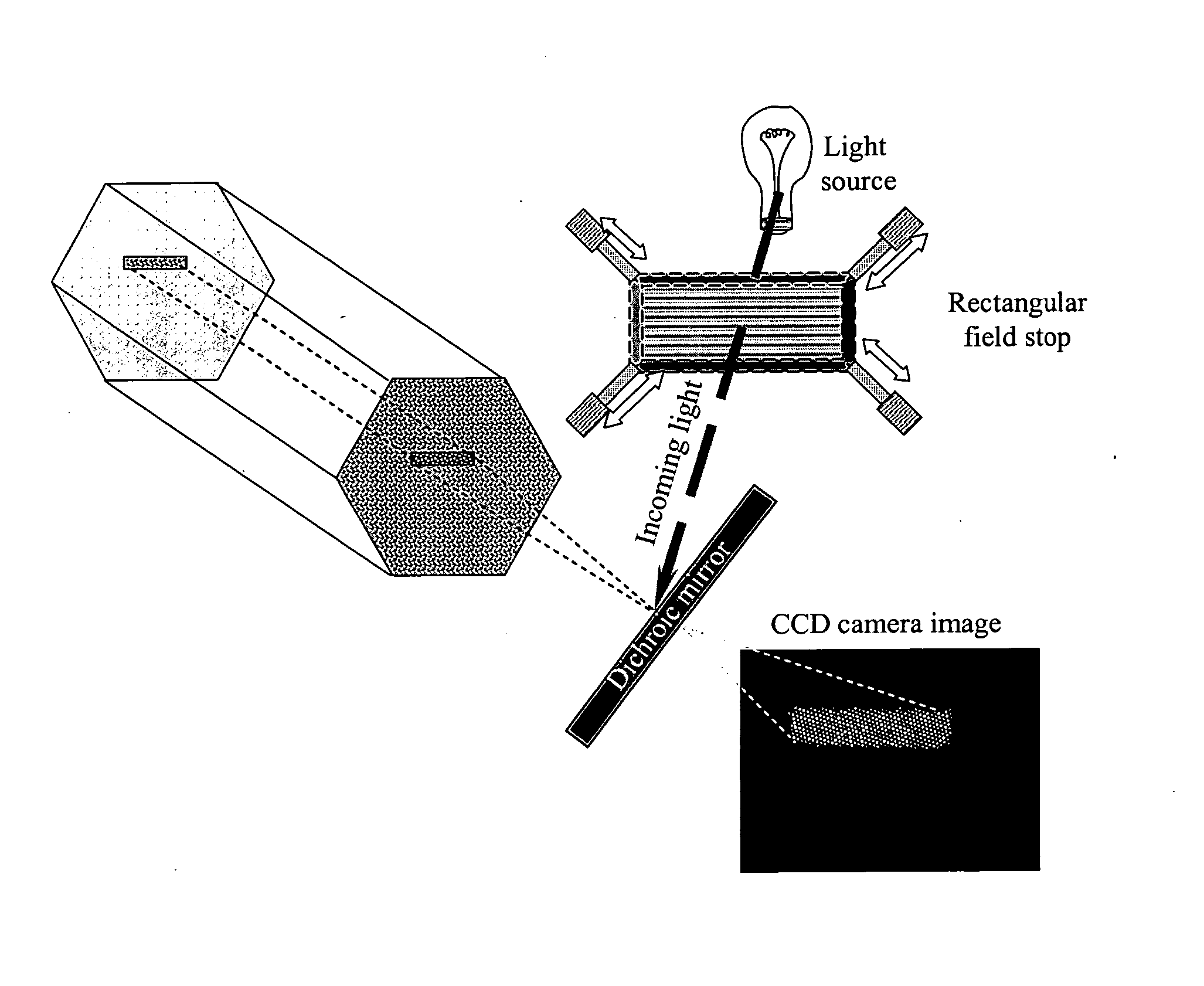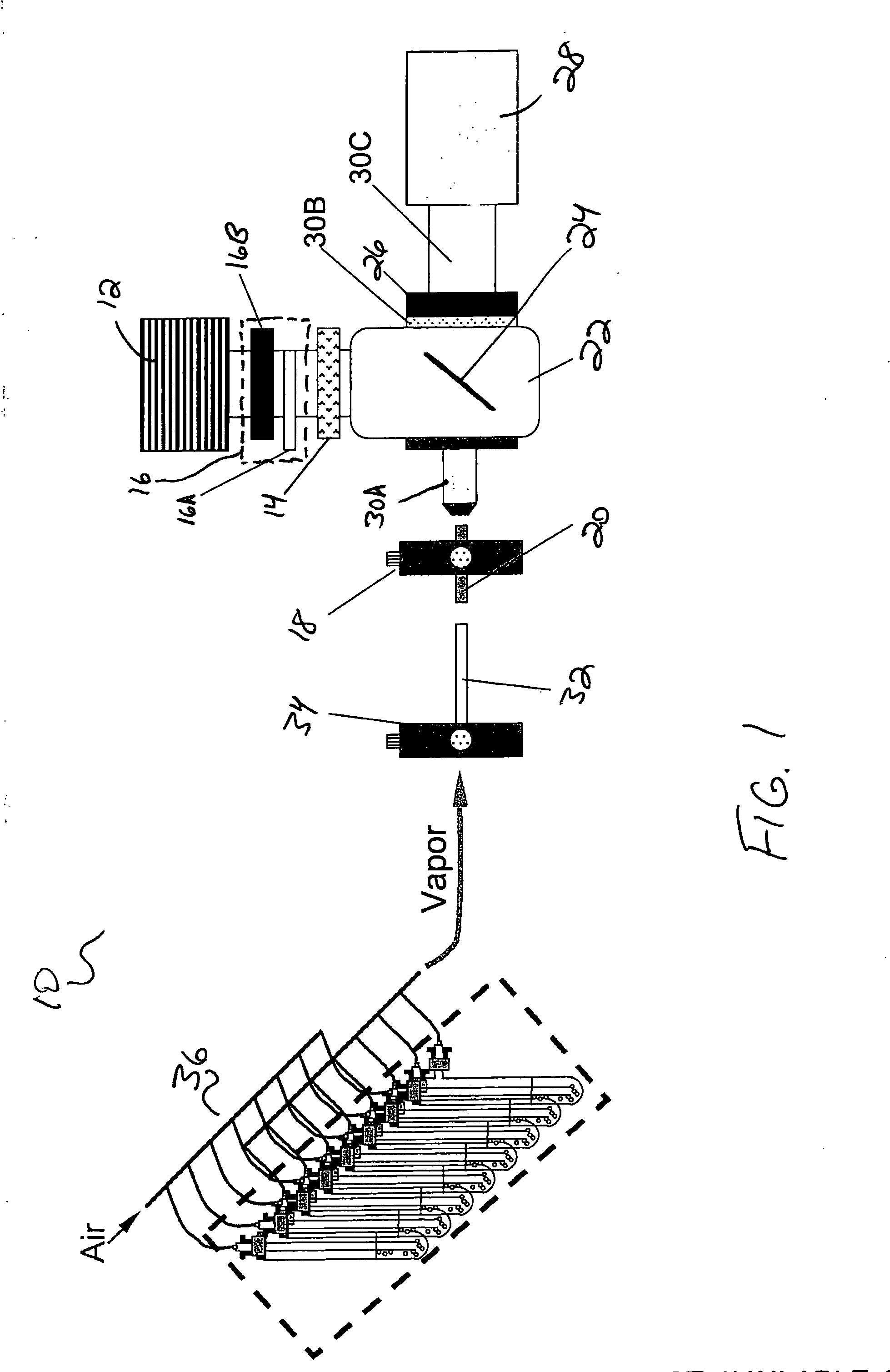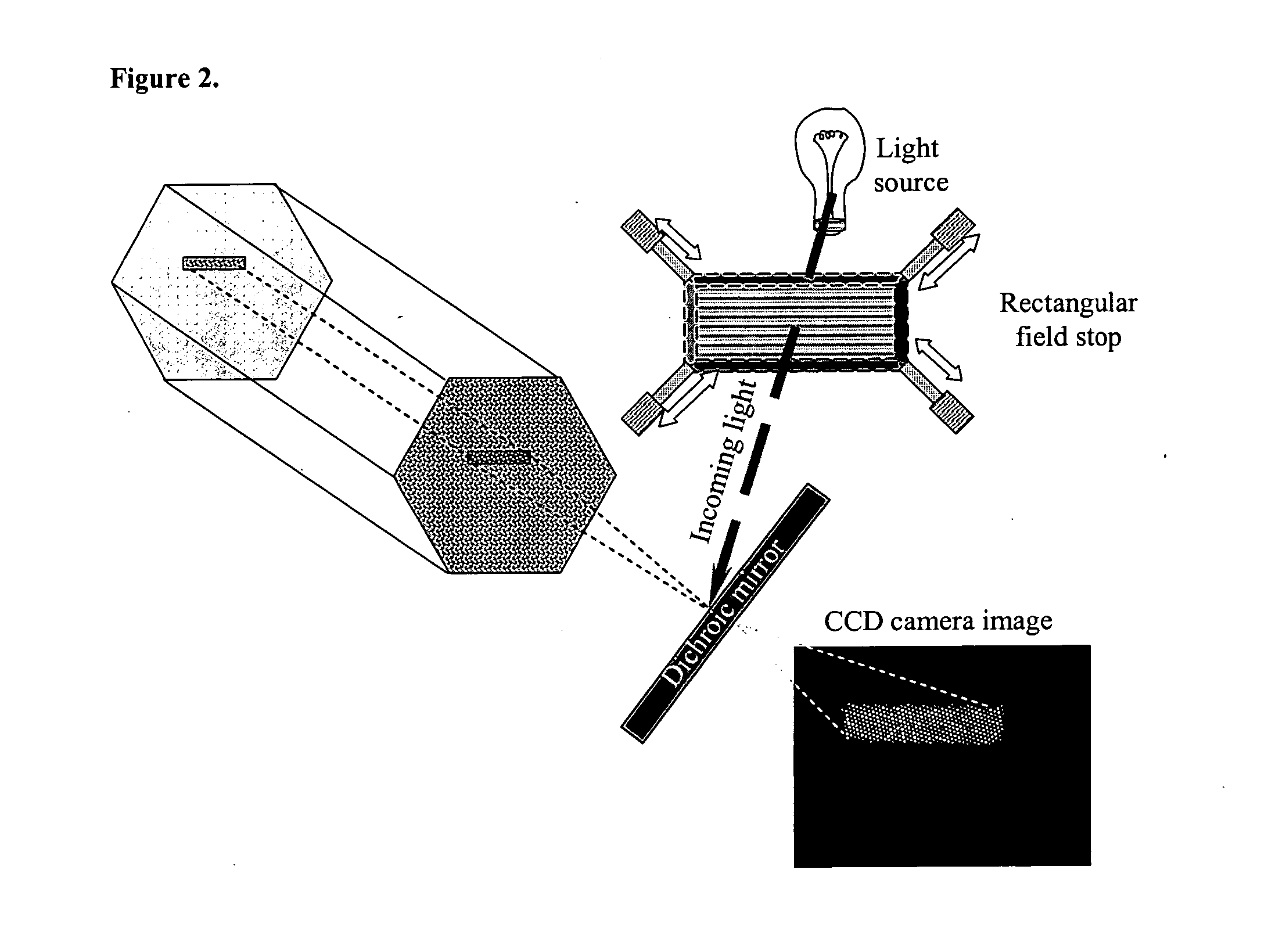Method and system of array imaging
a technology of array imaging and array array, applied in the field of array imaging, can solve the problems of reducing the responsiveness of sensors, limiting the use of sensor arrays, and replacing non-responsive sensors, and achieve the effect of decreasing the optical density and reducing the optical density over tim
- Summary
- Abstract
- Description
- Claims
- Application Information
AI Technical Summary
Benefits of technology
Problems solved by technology
Method used
Image
Examples
examples
[0102] The following examples are presented by way of demonstration, and not limitation, of the invention. Unless indicated otherwise, the following testing procedures and equipment were employed.
[0103] Methods and Materials
[0104] Sensor and Array Fabrication. The Alltech, Chirex, Sel, and Snafl bead sensors were similar to those reported previously (See Stitzel, S. E.; Cowen, L. J.; Albert, K. J.; Walt, D. R. Anal. Chem., 2001; Vol. 73, pp 5266-5271 (“Stitzel”)).
[0105] With respect to materials, Nile Red dye was purchased from Aldrich (Milwaukee, Wis.). SNAFL dye with a succinimidyl ester functional group was purchased from Molecular Probes (Eugene, Oreg.). Platinum EPS C4 and IBSil (NH2) beads were purchased as dry stocks from Alltech (Deerfield, Ill.) and Phenomenex (Torrance, Calif.), respectively. Chirex 3012 and Selectosil (SCX) beads were retrieved from Phenomenex liquid chromatography columns. Polished and etched optical fiber bundles with approximately 24,000 4.5 μm-diam...
PUM
 Login to View More
Login to View More Abstract
Description
Claims
Application Information
 Login to View More
Login to View More - R&D
- Intellectual Property
- Life Sciences
- Materials
- Tech Scout
- Unparalleled Data Quality
- Higher Quality Content
- 60% Fewer Hallucinations
Browse by: Latest US Patents, China's latest patents, Technical Efficacy Thesaurus, Application Domain, Technology Topic, Popular Technical Reports.
© 2025 PatSnap. All rights reserved.Legal|Privacy policy|Modern Slavery Act Transparency Statement|Sitemap|About US| Contact US: help@patsnap.com



